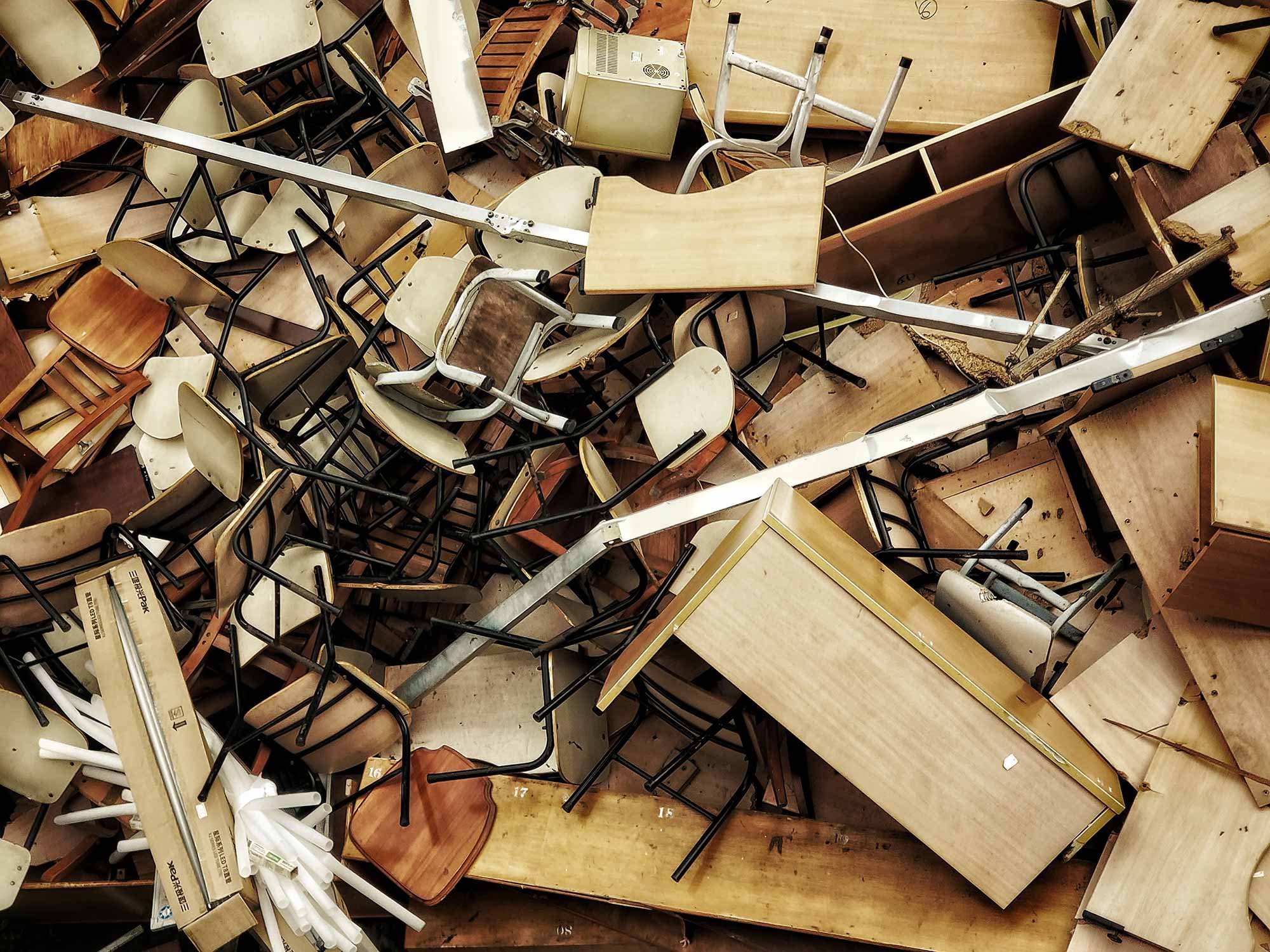Wood qualities and as waste
Here at Yellowsack, we like to help you recycle as much of your waste as possible, but there are sometimes, for the sake of safety and the environment, when that is not possible. Wood is a common recyclable material, but there are different grades to watch out for, and each of them is classified for different types of reuse or, if hazardous, must be classified for safe disposal.
Here's a breakdown of different types of wood you may find in your project:
Grade A classified as 'clean wood' includes:
hardwood packaging
scrap pallets
packing cases
solid softwood
offcuts
cable drums
Yellowsack will happily accept this type of wood as part of your waste disposal.
Recycling of the different types of wood
Grade A wood can be recycled into
building materials
horse/poultry bedding
play areas surfaces
panel board feedstock and more
“Grade B wood can be recycled to produce panelboard.”
Grade B wood can be recycled into
building waste wood
demolition waste wood
domestic furniture made from solid wood
Yellowsack can accept both type A + B type of wood.
“Grade C wood can be reused to produce biomass fuel.”
Grade C wood can be recycled into
flat pack furniture
fencing
chipboard
MDF
plywood and fibre-board
This type of wood waste can typically be disposed of using our Yellowsack dumpster bags, and we'll transport it to a recycling facility that accepts wood waste.
Grade D wood = Hazardous Wood!
Chemically Treated waste wood and contaminated woods are
railway sleepers
transmission poles
fences and cooling towers
Treated wood is one to watch out for on your construction or renovation project; it cannot be recycled due to risk to human health and the environment. Yellowsack cannot accept this type of wood.
“It can only be disposed of at specialist facilities that hold a license to take hazardous wood.”
How to spot hazardous wood:
The Department of Toxic Substances Control or DTSC has laid out some ways in which you can identify treated wood: Treated wood can often be visually distinguished by its appearance. There are several signs to look out for when determining if a piece of wood has been treated or not.
What are some things to look for when determining if wood is treated or not?
Treated wood end tag
Wood manufacturer stamp codes
Indentations on the surface of the wood (as seen in the photo above)
When cut, staining is visible around the perimeter only
Discoloration (e.g., green or dark brown appearance)
Odor
When treated with creosote or chlorophenol, wood is often darker in color and will have a 'chemical' or 'smoky' odor.
A 'greenish' color can usually help identify Pressure-treated wood that has been treated with inorganic preservatives. Depending on the treatment, these woods often contain high concentrations of chemicals that do not pass regulatory controls for safe disposal.
How do you safely dispose of hazardous wood?
California's hazardous wood must be segregated from other materials on your project, then packaged and transported in accordance with strict procedures and guidelines. In January of this year, the California Department of Toxic Substances recently posted information on how treated wood waste or TWW must be handled. See here for more information:
For more information on treated wood waste in household and commercial projects, please see DTSC's fact sheet here.
Companies like Napa Recycling also offer hazardous waste collection services; their website states: "Small amounts of treated wood (up to 3′ long) are accepted at the Napa-Vallejo Hazardous Waste Facility. Drop off is no charge for residential customers, but there is a limit of 50 lbs. The rate for commercial customers is $203/foot and the maximum per month is 220 lbs – appointments are required.” For more information, see here.
Reducing hazardous wood
And though specific woods may be required for some aspects of your project. Napa Recycling recommends choosing different types of wood where possible. They said, "Redwood and cedar are both naturally pest-resistant. Suppliers are also starting to offer more non-toxic treated wood options."
“Redwood and cedar are both naturally pest-resistant. Suppliers are also starting to offer more non-toxic treated wood options.”
With the help of this guide, you'll hopefully be able to identify the wood that could be damaging to the environment and your fellow neighbors and help you dispose of it safely. And the rest, let us take that off of your hands with our flexible dumpster bags. We'll take it to your local recycling facility, helping you and us create a circular economy and give back to the economy and the planet.


